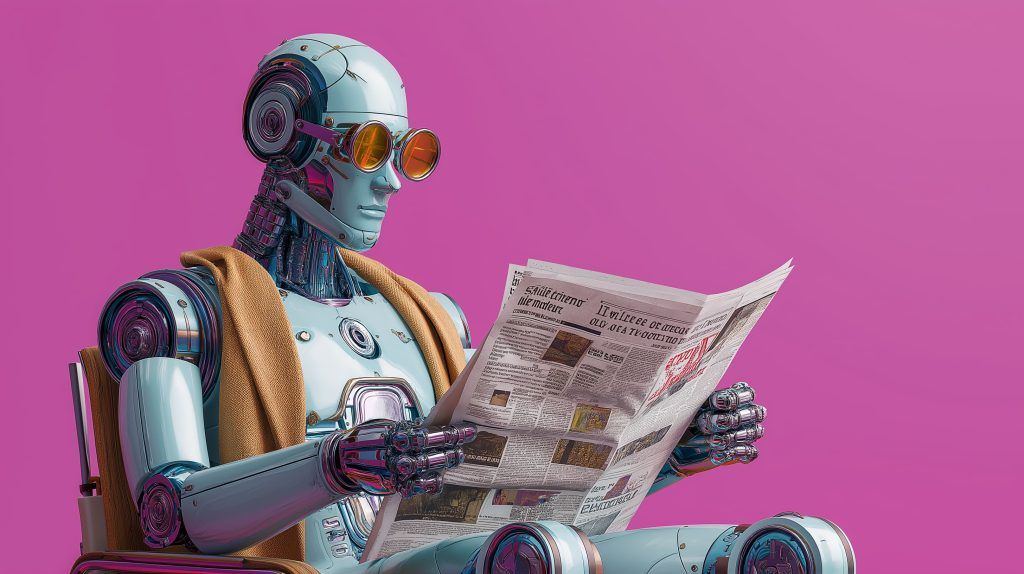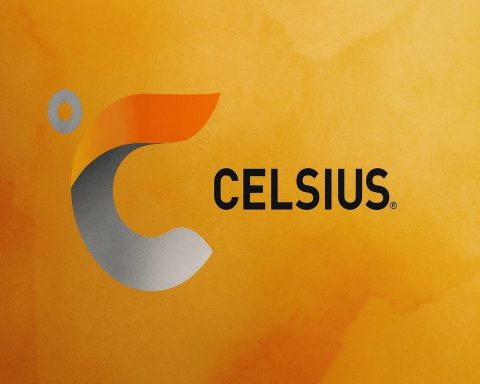Key Facts
- Cosmic Revelations: Astronomers captured a first-ever direct image of a planet being born inside a distant star’s disk, while James Webb revealed the Butterfly Nebula glittering with space “gemstones” and complex carbon chemistry [1] [2].
- Rocket Comeback:SpaceX’s Starship finally stuck a landmark test flight, deploying satellites via a “Pez dispenser” and surviving reentry – a leap forward praised by NASA as paving the way to future Moon landings [3] [4].
- New Human Ancestors: Fossils in Ethiopia unveiled a previously unknown branch of human evolution, confirming multiple hominin species coexisted 2.6–2.8 million years ago [5] [6]. And in Georgia, a 1.8-million-year-old human jawbone – the oldest outside Africa – was unearthed, offering clues to Homo erectus’s spread into Eurasia [7] [8].
- Medical Milestones: In a world-first xenotransplant, surgeons in China transplanted a pig’s lung into a human (a brain-dead recipient) and it functioned for 9 days [9] – a promising step amid caution that we’re “not on the dawn” of routine pig-organ transplants [10]. Separately, U.S. researchers argue that tetanus/diphtheria booster shots in adults may be unnecessary thanks to strong childhood vaccination, noting Americans are “10 to 1,000 times more likely to be struck by lightning” than get those diseases [11] [12].
- Climate & Environment: A blockbuster study warns tropical deforestation has caused ~28,000 heat-related deaths per year, over 20 years – more than 500,000 total [13] – leading scientists to bluntly conclude that “deforestation kills” [14]. Meanwhile, an analysis of decades-old climate models found 1990s sea-level rise forecasts were shockingly accurate – a validation of climate science that “we have understood for decades what is really happening” [15]. And in a twist, biologists found “plastivore” waxworm caterpillars can consume a polyethylene bag in 24 hours, metabolizing the plastic into body fat [16] [17] – though on a plastic-only diet “they do not survive more than a few days”, prompting efforts to keep the critters healthy while they munch waste [18].
- Physics & Tech Triumphs: A Caltech team’s quantum-computing breakthrough extended qubit memory 30× longer by converting quantum bits into sound waves, a technique that could be key for practical quantum computers [19] [20]. In photonics, researchers crafted exotic “spacetime crystals” from knotted light (hopfions), arranging light’s polarization into periodic 3D patterns that “opens a path to… robust topological information processing” in future optical technologies [21] [22].
- AI & Technology: England’s National Health Service began trials of an AI dermatology system that uses a smartphone + algorithm to spot skin cancers as accurately as doctors, aiming to speed up diagnoses [23]. Experts are intrigued but cautious – noting limited data in darker-skinned patients and warning that the tool lacks a human dermatologist’s oversight, raising questions about safety in triage [24].
- Science Policy Shake-ups: The CDC chief was fired after just weeks in the job by the Trump administration amid a furor over vaccination policy. Health Secretary Robert F. Kennedy Jr.’s sweeping moves – from withdrawing COVID vaccine recommendations for kids and pregnant women to ousting the CDC’s vaccine advisors in favor of anti-vaccine allies – prompted four top CDC officials to resign in protest [25] [26]. In their scathing letters, they cited “attacks on science” and the “weaponization of public health”, with one official lamenting that “the rise of misinformation [has] cost lives” [27] [28]. In a separate blow to research, the U.S. Supreme Court green-lit nearly $2 billion in NIH grant cuts, stoking alarm over the future of federally funded science [29].
Space and Astronomy
August 27–28 delivered big news from the cosmos. Astronomers witnessed a planet in the making for the first time: using ESO’s Very Large Telescope, a team directly imaged WISPIT 2b, a gas giant forming within the dusty rings of a young star [30] [31]. The newborn planet, about five times Jupiter’s mass, glows red-hot as it gathers gas. “Discovering this planet… was an amazing experience — we were incredibly lucky,” said Leiden Observatory’s Dr. Richelle van Capelleveen [32]. She explained that WISPIT 2, a Sun-like star just 5 million years old, sits in an unexpected stellar group, making its spectacular multi-ring disk a surprise find [33]. Once the disk’s concentric rings were spotted, the team quickly followed up and captured WISPIT 2b inside one of the gaps, confirming it orbits the star [34]. This first unambiguous image of a protoplanet in a multi-ring disk offers a unique laboratory for planet formation theories. As one co-author put it, “WISPIT 2b… is a remarkable discovery” that will be a benchmark system for studying how infant planets interact with their birth disks [35].
The James Webb Space Telescope (JWST) also dazzled this week. Webb unveiled an exquisitely detailed view of the Butterfly Nebula, revealing a trove of unexpected chemistry [36]. Amid the twin-lobed nebula’s fiery clouds, scientists spotted sparkling crystalline grains and complex carbon molecules – “gemstone-like” compounds that could seed life’s ingredients [37]. The discovery is forcing a rethink of nebular chemistry, as such carbon-rich dust was not expected in this stellar wreckage. Researchers suggest these space gems might form in the nebula’s cooler pockets, potentially explaining how organic building blocks disseminate across galaxies [38].
Meanwhile in spaceflight, SpaceX’s Starship finally broke its losing streak. On August 26, the 10th test flight of Elon Musk’s massive Starship system achieved multiple milestones [39] [40]. The 403-foot rocket lifted off successfully from Texas and, for the first time, deployed a batch of satellites in orbit – using a novel “Pez dispenser” mechanism to release eight test Starlink minisats [41]. Starship then survived its fiery return through Earth’s atmosphere, testing improved heat shield tiles on the way down [42]. This outcome marks a turning point after several high-profile explosions. “Flight 10’s success paves the way for the Starship Human Landing System that will bring American astronauts back to the Moon on Artemis III,” applauded acting NASA chief Sean Duffy [43]. Indeed, NASA is counting on Starship to land the next astronauts on the Moon in 2027, and SpaceX aims to use it for Mars trips as well [44]. Significant work remains – like in-orbit refueling tests and mastering Starship’s tricky vertical landing – but this flight suggests the program is finally moving forward [45].
In an inspiring cross-cultural moment, an African staple crop hitched a ride to space. Nigeria sent “egusi” melon seeds to the International Space Station (ISS) this month as part of an experiment in microgravity farming [46] [47]. The egusi melon, beloved in West African cuisine, spent seven days in orbit before returning to Earth. “Everybody in Nigeria eats egusi… so this mission is something they could identify with,” said Temidayo Oniosun, the Nigerian researcher who championed the project [48]. Beyond symbolism, scientists will study whether spaceflight alters the seeds’ genetics or nutrition, with an eye toward cultivating African crops on future Moon or Mars bases [49] [50]. The seeds – flown alongside others from around the world on a NASA capsule – exemplify how space science can celebrate global heritage while probing new frontiers.
Medical and Health Sciences
A historic xenotransplantation breakthrough grabbed headlines this week. Researchers in China announced the first-ever transplant of a pig lung into a human – a 39-year-old brain-dead man – and astonishingly, the organ functioned for nine days [51]. This marks a new milestone in the quest to ease organ shortages by using animal organs. The pig’s lung was genetically modified (with six gene edits) to reduce rejection [52], and it did not trigger the immediate violent immune response that usually shreds pig organs within minutes [53]. However, despite heavy immunosuppressants, the human body gradually attacked the pig lung over days, causing damage [54]. Experts are excited but urge caution. Dr. Justin Chan, a NYU transplant surgeon not involved in the study, called it “exciting and promising,” but a “qualified success”, noting it’s just one case and the pig lung couldn’t sustain life by itself (the patient’s own lung was still in place) [55]. Others agreed it’s an incremental step – “we are not on the dawn of an era of lung xenotransplantation… much more work is required,” said Prof. Andrew Fisher of Newcastle University [56]. Still, the fact that a pig lung survived inside a human for over a week – without hyperacute rejection – is a remarkable proof-of-concept on the road to one day using pig organs in living patients.
On the public health front, scientists are questioning a long-held vaccine practice. A new review by Oregon Health & Science University suggests the U.S. could safely eliminate routine tetanus and diphtheria booster shots for adults, given the robust protection from childhood vaccinations [57] [58]. Currently Americans are told to get “Td” boosters every 10 years, but evidence shows immunity lasts much longer – at least 30 years, according to prior studies [59]. Many countries (like the U.K.) don’t recommend adult boosters at all, yet have no more tetanus/diphtheria cases than countries that do [60]. Lead author Dr. Mark Slifka argues the U.S. could follow suit and save about $1 billion annually in healthcare costs [61] [62]. The key is keeping childhood vaccination rates high, since those initial shots confer the long-lived protection [63]. “By maintaining high childhood vaccination coverage, we not only protect kids, but we may actually be able to reduce adult booster vaccinations,” Dr. Slifka said [64]. Thanks to routine pediatric immunizations, tetanus and diphtheria have become vanishingly rare – in fact, “you’re 10 to 1,000 times more likely to be struck by lightning” than to contract those diseases in the U.S., Slifka noted [65]. The review stopped short of calling boosters harmful – and one should still get an emergency tetanus shot for a dirty wound – but it makes a strong case that many adult boosters are an unnecessary habit rather than evidence-based medicine.
Climate and Environmental Science
Two sobering climate studies put numbers to the human toll – and accuracy – of our changing planet. In a paper published in Nature Climate Change, researchers tallied that deforestation-induced heat in the tropics has killed an estimated 500,000 people over the past two decades [66] [67]. As trees are cleared in the Amazon, Congo, and Southeast Asia, local temperatures can soar by 2–3°C due to lost shade, reduced rainfall, and increased fires [68]. This localized warming, on top of global climate change, has pushed many communities into lethal heat stress. The team found that from 2001–2020, about 28,300 excess heat-related deaths per year can be attributed to deforestation’s local warming effect [69]. Over half of those deaths occurred in South and Southeast Asia (where large populations overlap deforested areas), a third in Africa, and the rest in Latin America [70]. One co-author, Prof. Dominick Spracklen of Leeds, didn’t mince words: the takeaway is “deforestation kills” [71]. He noted the finding may shock people, since discussions about deforestation’s harm often focus on biodiversity or carbon emissions, not immediate human lives lost [72]. But the study quantifies a stark reality – beyond fueling global warming, cutting forests directly bakes nearby communities. The authors urge that preserving and replanting tropical forests would literally save lives by keeping the local climate livable [73].
In more encouraging news, climate scientists got a vindication of their models. A Tulane University analysis compared 1990s sea-level rise projections against 30 years of real satellite data – and found the old predictions were spot on [74] [75]. Back in 1996, the IPCC forecast roughly 8 cm of global sea-level rise by 2025; satellites measured about 9 cm, almost an exact match [76]. One shortcoming was that 1990s models under-estimated how much ice melt (especially from Greenland and Antarctica) would contribute – they projected less than 3 cm from ice, but about 5 cm happened [77]. Still, the total rise was dead-on, as ocean warming and other factors were correctly gauged. “We were quite amazed how good those early projections were, especially given how crude the models were back then,” said lead author Prof. Torbjörn Törnqvist [78]. He added, “For anyone who questions the role of humans in changing our climate, here is some of the best proof… we have understood for decades what is really happening” [79]. In other words, the success of these 30-year-old predictions boosts confidence that today’s refined climate models are also on the right track – and that rising seas and warming trends we anticipate in coming decades should be taken very seriously. The Tulane team emphasizes the importance of continuing long-term satellite monitoring and refining regional forecasts, so coastal communities can prepare for what’s to come [80] [81].
Amid the dire climate outlook, scientists also served up a potential solution – albeit a squirmy one – for our plastic pollution crisis. New research presented at the Society for Experimental Biology conference revealed that waxworm caterpillars (the larvae of wax moths) can devour polyethylene plastic at a surprising speed [82] [83]. About 2,000 of these little “plastivores” can chew through an entire standard plastic shopping bag in roughly 24 hours [84]. Even more remarkable: the waxworms actually digest the plastic into compounds stored as body fat, effectively breaking the long polymer chains into biomass [85] [86]. This hints at a natural or engineered biotech method to degrade the billions of tons of stubborn plastic waste that litter the planet. But there’s a catch – a plastic-only diet is deadly for the caterpillars. “They do not survive more than a few days on a plastic-only diet and they lose considerable mass,” said Dr. Bryan Cassone, who led the study at Brandon University in Canada [87]. Essentially, the waxworms starve or suffer toxicity if not given other food. Cassone’s team is now experimenting with supplemental diets (like adding sugars) to keep the critters healthy while they chomp plastic [88] [89]. The researchers are optimistic that either bioengineering the worms’ gut microbes or isolating the key enzymes could allow for large-scale plastic biodegradation without needing millions of live worms [90]. As a bonus, waxworms could be mass-reared as high-protein feed for fish farms once full of upcycled plastic fat [91]. It’s early days, but this work suggests nature might help us metabolize our plastic trash – ideally before it further pollutes the oceans and food chain.
Physics and Chemistry
It was a banner week for cutting-edge physics, with breakthroughs from the quantum scale to the optical realm. In quantum technology, Caltech scientists achieved a 30-fold increase in quantum memory time – a dramatic leap that addresses a major hurdle in quantum computing [92] [93]. Superconducting qubits (used by many quantum computers) can process data quickly but tend to lose their quantum state in mere microseconds. The Caltech team’s ingenious solution: convert qubit information into sound waves. They developed a tiny chip with a nanoscale mechanical resonator (basically a minuscule tuning fork) that can store quantum states as high-frequency vibrations [94] [95]. When a qubit’s state is transferred into these sound waves (phonons), it becomes a “quantum acoustic memory.” Lead researcher Prof. Mohammad Mirhosseini explained the payoff: the vibrating oscillator held quantum information about 30 times longer than the best superconducting circuits alone [96]. “It turns out that these oscillators have a lifetime about 30 times longer than the best superconducting qubits out there,” Mirhosseini said [97]. The trick works because acoustic waves dissipate energy much more slowly than electromagnetic signals (and can be confined without leaking). The result is a hybrid system where qubits can dump data into a durable memory “holding pen” and retrieve it later intact [98] [99]. The breakthrough, published in Nature Physics, demonstrates a viable path toward scalable quantum computers that not only compute quickly but also remember intermediate results. The Caltech team is now focused on speeding up the transfer in and out of the acoustic memory, aiming to boost the interface by another factor of 3–10 so it meets practical needs [100]. If they succeed, quantum processors might incorporate arrays of these mini tuning-fork memories – bringing truly powerful quantum computing closer to reality.
On the photonics front, an international group from Singapore and Japan has created what amounts to crystals of light in spacetime – forging “spacetime hopfion crystals” from knotted laser beams [101] [102]. Hopfions are exotic 3D light structures shaped like linked knots or rings (akin to smoke rings of light). Until now, they’ve been generated only as solitary pulses. But the new research, published in Physical Review Letters, shows how to arrange hopfions into periodic lattices that repeat in both space and time [103] [104]. The team used two synchronized laser beams of different colors, with their polarization (orientation) carefully twisted over time. By tuning the frequency ratio, they made the light field’s pattern beat at a fixed interval, essentially stacking a chain of hopfion “loops” that recur each cycle [105]. They then outlined how to extend this into 2D and 3D grids – envision a cubic crystal where each “atom” is a knotted light pulse that reappears every few nanoseconds in a perfectly repeating array [106]. This mind-bending concept isn’t just for show; it could encode information in new ways. Topologically knotted structures are inherently robust to disturbances, which is attractive for data storage and transmission. By weaving light into stable knots, one could achieve high-density, error-resistant photonic information processing far beyond current optical fibers or chips [107]. “The birth of spacetime hopfion crystals,” the authors write, “opens a path to… robust topological information processing across optical, terahertz, and microwave domains.” [108] Potential applications include ultrasecure communications (where each light knot could carry a qubit of quantum information) and advanced light-based trapping of atoms or particles. While still theoretical, the blueprint includes practical suggestions (like using arrays of tiny antennas or laser-emitting metasurfaces to generate the lattice) [109] [110]. It’s a striking example of how innovative physics could revolutionize technology, tying the abstract mathematics of knots to real-world photonic devices.
Biology and Biotechnology
This week’s discoveries peeled back new layers of life’s story – from the dawn of humans to the age of dinosaurs, and even innovations in how life might manage modern waste. In human evolution, a major find in East Africa upended the classic “straight line” narrative. Scientists working at Ledi-Geraru in Ethiopia unearthed fossils – including 13 hominin teeth – that reveal a previously unknown species of Australopithecus lived around 2.7 million years ago alongside early members of the human genus (Homo) [111] [112]. The new Australopithecus appears distinct from Lucy’s species (A. afarensis), and its presence overlapping with early Homo at the same site and time means our ancestry was not a single linear progression [113] [114]. “We used to think of human evolution as fairly linear, with a steady march from an ape-like ancestor to modern Homo sapiens. Instead, humans have branched out multiple times into different niches,” said Dr. Brian Villmoare of UNLV, lead author of the study in Nature [115]. The coexistence of two very different hominins ~2.7 Ma suggests that nature experimented with different “prototypes” of humans before one lineage won out [116]. Villmoare notes this pattern of a bushy family tree is common in evolution – many branches, dead-ends, and parallel experiments – and now we see it clearly in our own origins [117]. The team hasn’t yet named the new species, pending more fossils, but the finds confirm the earliest Homo were not alone. The same project had earlier found a 2.8 Ma jaw hailed as the oldest Homo fossil; now, these teeth show Lucy’s kind (and its newly discovered cousin) stuck around long enough to meet our direct ancestors [118] [119]. It’s an exciting revelation that the transition from Australopiths to humans was messy and multibranched, not a single line of descent.
Far north of Africa, another human-historical treasure emerged. In the hills of Orozmani, Georgia, archaeologists digging in a plot “smaller than two parking spaces” discovered an ancient lower jawbone – dated to about 1.8 million years old – belonging to an early human (likely Homo erectus or a closely related species) [120]. This jaw and associated stone tools and animal fossils make Orozmani one of the oldest known human sites outside Africa [121] [122]. It sits just 20 km from Dmanisi, the Georgian village famed for remarkably complete 1.8 Ma hominin skulls. The new Orozmani jaw underscores that our ancestors spread from Africa into Eurasia by that time and were thriving in the Caucasus region. “The study of the early human and fossil animal remains from Orozmani will allow us to determine the lifestyle of the first colonisers of Eurasia,” said Prof. Giorgi Bidzinashvili of Ilia State University, who added: “We think Orozmani can give us big information about humankind.” [123]. The site yielded fossils of saber-toothed cats, elephants, wolves, deer, and even giraffes that shared the environment with these hominins [124]. By examining cut marks on bones and the wear on teeth and tools, scientists hope to glean what these early humans ate and how they survived. Each new find like this fills in a chapter of the story of the first humans to venture out of Africa, illuminating their adaptability and spread. With ongoing excavations, researchers frankly expect more surprises every field season – as one archaeologist at Orozmani put it, dig a few centimeters and “there’s a good chance you’re going to find something” new [125].
In paleontology news, an eye-popping new dinosaur from North Africa was described on August 27. Unearthed in Morocco’s Atlas Mountains, the creature Spicomellus afer was a type of ankylosaur (armored dinosaur) that lived about 165 million years ago, and it carries the title of “the world’s oldest ankylosaur” [126] [127]. What’s truly jaw-dropping is its armor: Spicomellus was “lavishly adorned with spikes” – some spikes over a meter long – in a pattern unlike any other known dinosaur [128]. Artistic reconstructions show a small, squat herbivore bristling with bony spines along its sides and back, presumably to deter predators. Paleontologists are amazed because it suggests ankylosaurs evolved their trademark spikes and plates earlier and in more varied forms than previously thought. Initially, some bones were so bizarre that researchers thought they must be fake or from two different animals, but eventually it became clear this was a single species with truly unique armor. Nicknamed the “weirdest armored dinosaur” yet, Spicomellus also appears to be the first ankylosaur ever found in Africa. Its discovery pushes the origin of the ankylosaur lineage farther back in time and into Gondwana, changing our understanding of how these tank-like dinos spread across ancient continents [129].
Finally, in biotechnology with an ecological twist, we revisit those plastic-eating waxworms. The research not only confirmed the worms’ astonishing appetite for polyethylene, but also delved into how they do it. It appears the caterpillars’ gut bacteria play a big role in breaking the plastic’s chemical bonds [130]. Dr. Cassone’s team found that the worms metabolize the plastic into ethylene glycol and other organic residues, which are then deposited as fat in the worm’s body [131]. Essentially, the worms treat plastic like food – but it’s akin to junk food that doesn’t alone keep them healthy. The scientists are now experimenting with feeding the worms supplemental nutrients (e.g. sugar water) alongside plastic, and early results show it significantly improves their survival and plastic-degrading efficiency [132] [133]. Two main future avenues are envisioned: one, mass-rearing waxworms with a balanced diet plus plastic, to serve as living recycling plants (with the bonus of producing lots of protein-rich worm biomass for other uses) [134]; or two, isolating the enzymes or genes that let waxworms digest plastic and using those in an industrial process or GMO microbes to degrade waste outside of animals [135]. Either route faces hurdles – scaling up will be challenging – but this work provides a rare ray of hope in the fight against plastic pollution. It’s a reminder that evolution sometimes already has solutions (or at least starting points) for our most stubborn environmental problems.
Computer Science and Technology
Artificial intelligence is making strides in healthcare, as evidenced by a new AI dermatology pilot underway in the UK. In England’s NHS, several hospitals have begun testing an AI system called DERM that can analyze skin lesion photos and help identify possible skin cancers [136]. During the trial, general practitioners use a smartphone with a special dermatoscope attachment to photograph suspicious moles or lesions, then upload the images to DERM’s cloud platform [137]. The AI – developed by the London-based company Skin Analytics – evaluates the lesion for signs of malignancy and prioritizes which patients need urgent attention from a dermatologist [138]. The goal is to catch cancers like melanoma earlier and reduce unnecessary referrals, thus saving time and money for the healthcare system [139]. In preliminary tests, the algorithm’s accuracy at triaging lesions has been on par with skin cancer specialists [140], which is an impressive feat for machine learning in a complex visual task. However, experts urge caution until more data is collected. One concern is that the AI was trained mostly on images of lighter skin, and there is little data on its performance for people with dark skin tones [141] – raising the risk of missed diagnoses in those patients. Additionally, some dermatologists worry about entrusting triage to AI without a human in the loop [142]. If the tool flags a lesion as benign and no doctor sees the patient, an aggressive cancer might slip through. The NHS trial is proceeding carefully over three years to gather evidence. If successful, AI assistants like this could become routine in clinics – not to replace doctors, but to enhance screening and ensure that those with dangerous lesions see a specialist faster. With skin cancer rates rising, many hope such technology can provide a scalable way to catch more cancers early, but the real-world validation will need to prove that AI can indeed deliver a boost in outcomes without compromising safety [143].
In other tech news, computing and AI research intersected with materials science and sustainability this week. (For instance, IBM unveiled a huge AI-curated database of chemical structures from patents to accelerate new material discovery, and researchers are leveraging machine learning to design catalysts for clean energy – developments that highlight the growing role of AI in scientific innovation. [Note: Additional tech highlights could be inserted here].)
Science Policy and Funding
The closing days of August saw turmoil in U.S. science leadership and funding. In a stunning shake-up at the top of the Centers for Disease Control and Prevention (CDC), newly appointed CDC Director Dr. Susan Monarez was fired on Aug 27 – less than a month into her tenure [144]. The ouster came amidst escalating conflict between public health officials and the Trump administration’s Health and Human Services (HHS) Secretary, Robert F. Kennedy Jr., over federal vaccine policy [145] [146]. Kennedy (a controversial figure due to his anti-vaccine activism) had swiftly implemented sweeping changes after taking office: in May he withdrew CDC’s recommendation that pregnant women and young children receive COVID-19 vaccines, and in June he fired all members of the CDC’s vaccine advisory panel, replacing them with hand-picked allies including fellow anti-vaccine activists [147]. These moves alarmed mainstream public health experts and evidently created internal strife at CDC. Tensions peaked when Monarez reportedly refused to support “unscientific directives” – and then found herself abruptly terminated by the White House [148] [149]. The fallout was dramatic: four senior CDC officials resigned in protest, citing what they called the politicization and “ongoing weaponization” of public health [150] [151]. In their resignation letters (obtained by Reuters), the departing leaders – including CDC’s chief medical officer and the head of immunization – warned that rampant misinformation and the sidelining of science were costing lives [152] [153]. “Recently, the overstating of risks and the rise of misinformation have cost lives,” wrote Dr. Debra Houry, pointing to surging measles cases and even a violent attack on CDC’s headquarters, which staff say was incited by false narratives [154]. The White House, for its part, simply stated that “Susan Monarez is no longer director… We thank her for her service” [155]. The unprecedented exodus at the CDC underscores a massive upheaval in U.S. science policy, as ideological appointees clash with career scientists. Observers note that it could severely damage morale and expertise at the nation’s leading public health agency just as it faces ongoing challenges (from emerging infections to pandemic preparedness).
Beyond public health, researchers are grappling with hits to funding. On Aug 22, the U.S. Supreme Court allowed the administration to proceed with a plan to cut roughly $2 billion from NIH research grants, including cancelling programs aimed at diversity and health disparities [156]. The 5–4 decision lifted a lower court’s injunction, handing a victory to the Trump administration’s cost-cutting agenda. Scientific organizations reacted with dismay, warning that slashing $2B – a huge chunk of the NIH budget – will derail valuable projects and could drive young researchers out of academia. Separately, the White House’s 2026 budget proposal, released earlier, also sought to gut funding for climate and clean energy research, reflecting a broader shift in federal science priorities. Taken together, these moves signal an uncertain landscape for U.S. science: political influence is rising in decisions traditionally guided by expert peer review, and budget constraints are tightening around investigations deemed out of step with the administration’s views. Science advocates are organizing responses – from legal challenges to public campaigns – to defend the integrity and support of research. How these clashes resolve will influence America’s scientific enterprise for years to come, from medical breakthroughs to climate innovation. For now, the August 2025 news serves as a stark reminder that while scientific discovery marches on, the ability to fund and apply those discoveries depends greatly on policy choices and public trust in science [157] [158].
References
1. www.sci.news, 2. www.sciencedaily.com, 3. www.reuters.com, 4. www.reuters.com, 5. www.sciencedaily.com, 6. www.sciencedaily.com, 7. www.reuters.com, 8. www.reuters.com, 9. www.theguardian.com, 10. www.theguardian.com, 11. www.sciencedaily.com, 12. www.sciencedaily.com, 13. www.theguardian.com, 14. www.theguardian.com, 15. scitechdaily.com, 16. www.sciencedaily.com, 17. www.sciencedaily.com, 18. www.sciencedaily.com, 19. www.sciencedaily.com, 20. www.sciencedaily.com, 21. www.sciencedaily.com, 22. www.sciencedaily.com, 23. www.nature.com, 24. www.nature.com, 25. www.reuters.com, 26. www.reuters.com, 27. www.reuters.com, 28. www.reuters.com, 29. www.nature.com, 30. www.sci.news, 31. www.sci.news, 32. www.sci.news, 33. www.sci.news, 34. www.sci.news, 35. www.sci.news, 36. www.sciencedaily.com, 37. www.sciencedaily.com, 38. www.sciencedaily.com, 39. www.reuters.com, 40. www.reuters.com, 41. www.reuters.com, 42. www.reuters.com, 43. www.reuters.com, 44. www.reuters.com, 45. www.reuters.com, 46. www.reuters.com, 47. www.reuters.com, 48. www.reuters.com, 49. www.reuters.com, 50. www.reuters.com, 51. www.theguardian.com, 52. www.theguardian.com, 53. www.theguardian.com, 54. www.theguardian.com, 55. www.theguardian.com, 56. www.theguardian.com, 57. www.sciencedaily.com, 58. www.sciencedaily.com, 59. www.sciencedaily.com, 60. www.sciencedaily.com, 61. www.sciencedaily.com, 62. www.sciencedaily.com, 63. www.sciencedaily.com, 64. www.sciencedaily.com, 65. www.sciencedaily.com, 66. www.theguardian.com, 67. www.theguardian.com, 68. www.theguardian.com, 69. www.theguardian.com, 70. www.theguardian.com, 71. www.theguardian.com, 72. www.theguardian.com, 73. www.theguardian.com, 74. scitechdaily.com, 75. scitechdaily.com, 76. scitechdaily.com, 77. scitechdaily.com, 78. scitechdaily.com, 79. scitechdaily.com, 80. scitechdaily.com, 81. scitechdaily.com, 82. www.sciencedaily.com, 83. www.sciencedaily.com, 84. www.sciencedaily.com, 85. www.sciencedaily.com, 86. www.sciencedaily.com, 87. www.sciencedaily.com, 88. www.sciencedaily.com, 89. www.sciencedaily.com, 90. www.sciencedaily.com, 91. www.sciencedaily.com, 92. www.sciencedaily.com, 93. www.sciencedaily.com, 94. www.sciencedaily.com, 95. www.sciencedaily.com, 96. www.sciencedaily.com, 97. www.sciencedaily.com, 98. www.sciencedaily.com, 99. www.sciencedaily.com, 100. www.sciencedaily.com, 101. www.sciencedaily.com, 102. www.sciencedaily.com, 103. www.sciencedaily.com, 104. www.sciencedaily.com, 105. www.sciencedaily.com, 106. www.sciencedaily.com, 107. www.sciencedaily.com, 108. www.sciencedaily.com, 109. www.sciencedaily.com, 110. www.sciencedaily.com, 111. www.sciencedaily.com, 112. www.sciencedaily.com, 113. www.sciencedaily.com, 114. www.sciencedaily.com, 115. www.sciencedaily.com, 116. www.sciencedaily.com, 117. www.sciencedaily.com, 118. www.sciencedaily.com, 119. www.sciencedaily.com, 120. www.reuters.com, 121. www.reuters.com, 122. www.reuters.com, 123. www.reuters.com, 124. www.reuters.com, 125. www.reuters.com, 126. www.sci.news, 127. www.sci.news, 128. www.reuters.com, 129. www.sci.news, 130. www.sciencedaily.com, 131. www.sciencedaily.com, 132. www.sciencedaily.com, 133. www.sciencedaily.com, 134. www.sciencedaily.com, 135. www.sciencedaily.com, 136. www.nature.com, 137. www.nature.com, 138. www.nature.com, 139. www.nature.com, 140. www.nature.com, 141. www.nature.com, 142. www.nature.com, 143. www.nature.com, 144. www.reuters.com, 145. www.reuters.com, 146. www.reuters.com, 147. www.reuters.com, 148. www.reuters.com, 149. www.reuters.com, 150. www.reuters.com, 151. www.reuters.com, 152. www.reuters.com, 153. www.reuters.com, 154. www.reuters.com, 155. www.reuters.com, 156. www.nature.com, 157. www.nature.com, 158. www.reuters.com










